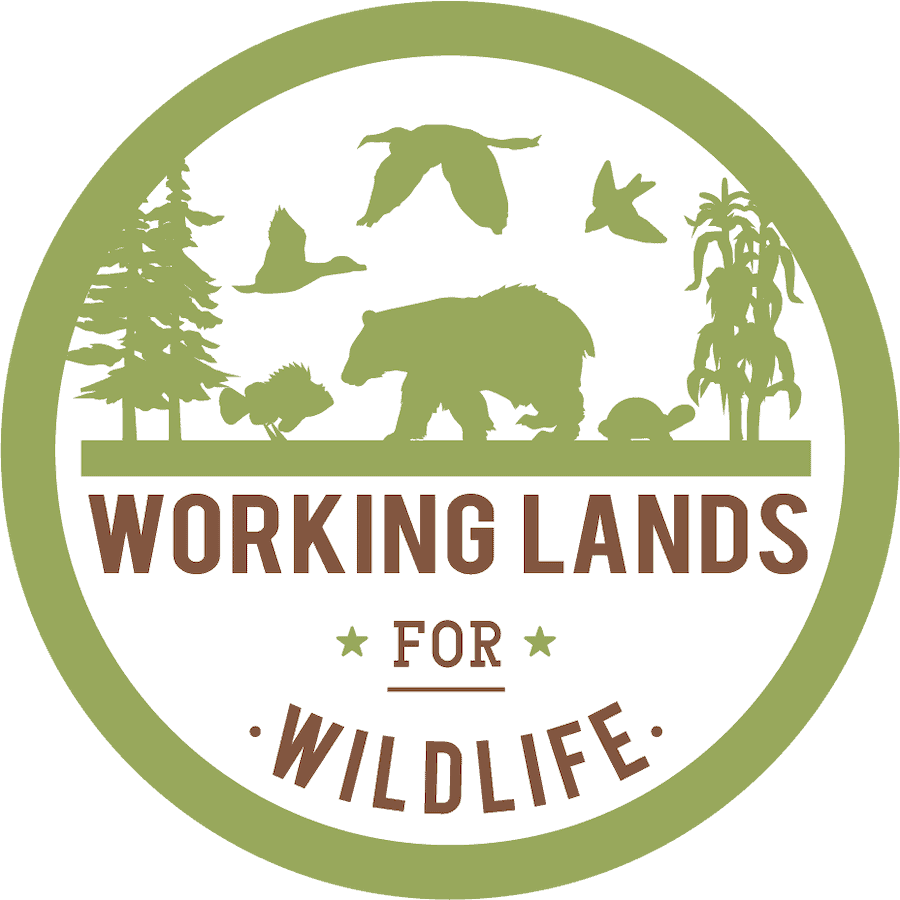-
 Cost Share Programs for landowners
Cost Share Programs for landowners
-
by
Web Editor
—
published
Feb 22, 2021
—
last modified
Apr 21, 2023 02:24 PM
—
filed under:
Training Resources,
WLFW,
Webinars and Instructional Videos,
Northern Bobwhite Quail,
Bobwhite Quail Seminar Series,
Video,
Grasslands and Savannas,
South Carolina Bobwhite Initiative,
Working Lands for Wildlife
Creating bobwhite habitat doesn't have to be expensive. SCDNR biologist Andy Krieg explains the ins and outs of a few cost share programs that are available to help you fund improvements on your property.
Located in
Training Resources
/
Webinars and Instructional Videos
/
Bobwhite Quail Seminar Series
-
 Crafting the perfect quail haven
Crafting the perfect quail haven
-
by
Rachel Holt
—
published
May 26, 2025
—
last modified
May 27, 2025 05:42 AM
—
filed under:
WLFW,
Northern Bobwhite Quail,
Grasslands and Savannas,
Prescribed Burn,
Landowner,
Habitat Management
SOUTH CAROLINA LANDOWNER’S MISSION TO RESTORE NORTHERN BOBWHITE QUAIL
Located in
Stories
-
 Delaware Priority Area Shapefiles
Delaware Priority Area Shapefiles
-
by
Sage Voorhees
—
published
Mar 05, 2022
—
last modified
Apr 20, 2023 10:59 PM
—
filed under:
Information,
Northeast,
WLFW,
Delaware,
Northern Bobwhite Quail,
Boundaries & Priority Area Shapefiles,
Maps and Spatial Data,
Grasslands and Savannas,
Working Lands for Wildlife
Delaware, Priority Area for Northern Bobwhite
Located in
Information
/
…
/
Boundaries & Priority Area Shapefiles
/
Northeast
-
 DOI Nature-based Solutions Roadmap
DOI Nature-based Solutions Roadmap
-
by
Web Editor
—
published
Mar 19, 2024
—
last modified
Jul 22, 2025 07:58 PM
—
filed under:
Published Materials,
WLFW,
Grasslands,
General Resources and Publications,
Wildland Fire,
SE FireMap,
Grasslands and Savannas,
Working Lands for Wildlife,
Resources
The purpose of the Department of the Interior Nature Based Solutions Roadmap is to provide Department of the Interior (DOI) staff with consistent and credible information about nature-based solutions, such as which strategies match certain conditions and goals, what co-benefits they are likely to provide, example projects, and additional resources for project planning, construction, and monitoring.
Located in
Learning & Tech Transfer
/
General Resources and Publications
/
Inbox
-
 Economic and Production Performance of Native Grasses as Forage in the Fescue Belt
Economic and Production Performance of Native Grasses as Forage in the Fescue Belt
-
by
Bridgett Costanzo
—
published
Jun 11, 2019
—
last modified
Apr 21, 2023 12:37 AM
—
filed under:
WLFW Outcomes: Funded Research,
WLFW,
Northern Bobwhite Quail,
Research,
Grasslands and Savannas,
Working Lands for Wildlife
The primary purpose of developing this literature review and summary was to inform producers about the potential benefits from utilizing warm-season grasses in the Fescue Belt. Effectively, managing forages is not always straightforward for livestock producers. Summarizing the economic and production benefits from using warm-season grasses could help producers make more informed forage management decision and might encourage producers to consider adopting warm-season grasses. Furthermore, this literature review also gathered information about the potential benefits of using native grasslands as forage to the quail population in this region, which could likely result in an economic benefit to the producer from leasing farmland to hunters.
Located in
Information
/
Research
/
WLFW Outcomes: Funded Research
-
 Establishing Native Grass Forages:A Brief Overview w/ Dr. Pat Keyser
Establishing Native Grass Forages:A Brief Overview w/ Dr. Pat Keyser
-
by
Web Editor
—
published
Dec 30, 2020
—
last modified
Apr 21, 2023 03:36 PM
—
filed under:
Training Resources,
WLFW,
Webinars and Instructional Videos,
Northern Bobwhite Quail,
Webinar,
Grasslands and Savannas,
Working Lands for Wildlife,
Native Warm-Season Grass Forages
Day 1, Session 2. Native Warm-Season Grasses Webinar with Dr. Pat Keyser and Jef Hodges. Presented December 1, 2021.
Located in
Training Resources
/
Webinars and Instructional Videos
/
Webinar- Course on Native Warm-Season Grass Forages and Grazing Management for Bobwhites
-
 Field Borders-Wildlife (IL)
Field Borders-Wildlife (IL)
-
by
Bridgett Costanzo
—
published
Mar 12, 2021
—
last modified
Apr 21, 2023 12:13 AM
—
filed under:
Information,
field border,
WLFW,
Northern Bobwhite Quail,
cropland,
job sheet,
Job Sheets,
NRCS,
Grasslands and Savannas,
Working Lands for Wildlife,
NRCS Conservation Practices & Materials
Job sheet
Located in
Information
/
NRCS Conservation Practices & Materials
/
Job Sheets
-
 Filter Strips-Wildlife (IL)
Filter Strips-Wildlife (IL)
-
by
Bridgett Costanzo
—
published
Mar 12, 2021
—
last modified
Apr 21, 2023 12:10 AM
—
filed under:
Information,
WLFW,
Northern Bobwhite Quail,
cropland,
Job Sheets,
NRCS,
Grasslands and Savannas,
Working Lands for Wildlife,
NRCS Conservation Practices & Materials,
filter strips
Job sheet
Located in
Information
/
NRCS Conservation Practices & Materials
/
Job Sheets
-
 Florida Priority Area Shapefiles
Florida Priority Area Shapefiles
-
by
Sage Voorhees
—
published
Mar 05, 2022
—
last modified
Apr 20, 2023 10:56 PM
—
filed under:
Information,
WLFW,
Florida,
Northern Bobwhite Quail,
Boundaries & Priority Area Shapefiles,
Southeast,
Maps and Spatial Data,
Grasslands and Savannas,
Working Lands for Wildlife
Northern Bobwhite Quail Priority Area, Northern Bobwhite Grasslands and Savannas Partnership 2022-2026
Located in
Information
/
…
/
Boundaries & Priority Area Shapefiles
/
Southeast
-
 Forest Certification and Quail Conservation: What’s the Intersection?: Paul Trianosky
Forest Certification and Quail Conservation: What’s the Intersection?: Paul Trianosky
-
by
Sage Voorhees
—
published
Dec 30, 2020
—
last modified
Apr 21, 2023 03:26 PM
—
filed under:
Training Resources,
WLFW,
Webinars and Instructional Videos,
Northern Bobwhite Quail,
Conservation,
Video,
Grasslands and Savannas,
Working Lands for Wildlife,
Grasslands National Partnership Meeting
Paul Trianosky speaking at the WLFW Northern Bobwhite, Grasslands and Savannas National Partnership Meeting. February 23, 2021. Paul is the Chief Conservation Officer at Sustainable Forestry Initiative.
Located in
Training Resources
/
Webinars and Instructional Videos
/
Working Lands for Wildlife (WLFW): Northern bobwhite, Grasslands and Savannas National Partnership Meeting, Feb 23rd-24th 2021


